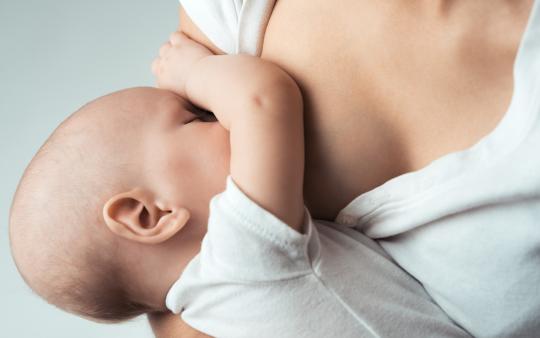When breastfeeding is new for a mother and child, it is common to experience some discomfort, whether from a poor latch, from sensitive skin, or from cracked or sore nipple tissue. (Plus, there's the emotional roller coaster that is the "fourth trimester.") Traditional treatment for nipple pain has largely been the domain of lanolin, a waxy, yellow substance naturally derived from wool, but there are times you may need an alternative to the commercial nipple creams made with lanolin.
Lactation consultants, midwives, doulas, and doctors alike have all recommended purified lanolin as a natural skin barrier to facilitate moist wound healing—a method used to encourage the regeneration of skin using a moist environment to prevent scabbing. Unless you have a lanolin allergy, this treatment is safe for you and baby. However, if you have sensitive skin (which can be aggravated by pesticides in the wool) or if you practice a vegan lifestyle, you may want a nipple cream without lanolin to make your breastfeeding experience more comfortable. It may also help to prepare yourself for breastfeeding with these tools and tips.
Natural lanolin-free nipple cream alternatives
1. Hind milk
Hind milk, the thick creamy milk that you produce towards the end of a feeding has been shown to be just as effective as lanolin for nipple pain. Simply rub a little into the sore skin after each feeding. It’s natural, safe for baby, and it's free!
2. Unrefined coconut oil
Anti-bacterial, anti-fungal, and rich in antioxidants, organic raw coconut oil (avoid refined, purified, and liquid forms) is a great natural nipple cream and provides a deep moisture that absorbs quickly. As a bonus, coconut oil has also been shown to strengthen underlying tissues and remove excess dead skin cells from the skin’s surface. Safe for baby.
3. Organic olive oil
Extra virgin olive oil is a superb lanolin alternative with healing and anti-inflammatory properties, and you’ve probably already got some in your kitchen! Use an organic version and be sure to wash away before baby nurses.
4. Manuka honey
Honey is known for being anti-bacterial and manuka honey in particular is known for its healing properties. As a bonus, this alternative to lanolin nipple cream has been shown to effectively fight and kill bacteria containing Streptococcus pyogenes. The Unique Manuka Factor (UMF) is a quality rating that indicates the level of components that give it its antimicrobial qualities.
A note about honey:
-
The only two types of honey that you should attempt this with are manuka and pure, unrefined honey. Never apply conventional grocery store “Grade A” honey to wounds as this could possibly worsen your condition.
-
Always wash your breast and nipple well before feeding baby when using a manuka treatment. Babies should not be exposed to it until they are at least 12 months of age.
5. Commercial lanolin-free nipple creams
Look for commercial nipple creams (we've rounded up our favourites here) that only contain natural ingredients that can be safely ingested by baby. Some better brands include such things as extra virgin olive oil, shea butter, marshmallow root, and calendula. Beeswax is also a good natural ingredient but is not suitable for vegans. If you're vegan, try these nipple creams for plant-based mamas instead!
Other natural options for relieving breast pain
- Relax with a warm compress before baby latches. This helps relieve engorgement, and softens and relaxes the nipple, encouraging let-down.
- Apply a cold compress between feedings under your arms and to your breasts to reduce swelling. Apply for 15-20 minutes as needed.
- Hand-express a little milk if your nipple and areola are hard, and massage the breast gently to encourage flow.
- Go topless as much as possible, and let the air dry your nipples.
- Avoid soap on your nipples unless you are treating open wounds. Soap can be drying and strip the skin of natural oils. Water is all you need to keep your nipples clean.
- Frequent, consistent nursing and/or pumping is important for maintaining your supply; nursing your baby will help improve your situation, so stick to it.
Often, sore and cracked nipples are a result of a poor latch and can be corrected with some guidance from a doula, lactation consultant, or nurse. Reach out to your local La Leche League USA or La Leche League Canada for support and expertise to help make your breastfeeding experience as wonderful as it can be!
And make sure you know your rights as a breastfeeding Canadian mom.
*Originally published January 8, 2016






